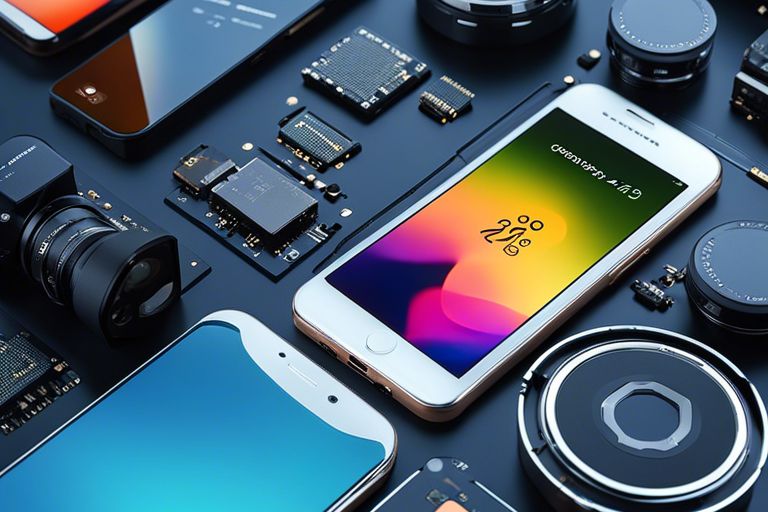Have you ever considered the possibility of customizing your smartphone to fit your specific needs and preferences? With the rise of modular smartphones, this idea is becoming a reality. Imagine being able to upgrade your camera, battery, or processor without having to replace your entire phone. The flexibility and customizability of modular smartphones are revolutionizing the way we think about mobile technology. In this blog post, we will take a closer look at the potential of modular smartphones, their impact on the tech industry, and whether they are the next big trend for 2024. Get ready to explore the exciting world of customizable phone components and their role in shaping the future of smartphones.
Contents
Key Takeaways:
- Modular smartphones are a potential trend for 2024 due to the increasing demand for personalized and customizable technology.
- Customizable phone components offer a new level of flexibility and sustainability, allowing users to upgrade and replace individual parts as needed.
- The future of smartphone technology may be moving towards a modular approach, providing users with the ability to tailor their devices to their specific needs and preferences.

The Concept of Modular Smartphones
Even as smartphones continue to evolve and improve, you may have noticed a surge of interest in modular smartphones. This concept involves the ability to customize and upgrade different components of your phone, such as the camera, battery, or processor, without having to replace the entire device. But what exactly are modular smartphones, and how do they work? Let’s take a closer look at this innovative trend.
Defining Modular Smartphones
Modular smartphones are essentially devices that are built with interchangeable parts, allowing you to customize and upgrade specific components without replacing the entire phone. With a modular phone, you have the flexibility to swap out modules such as the camera, battery, or storage, giving you a higher level of control over the features and capabilities of your device. This means that you can tailor your smartphone to fit your specific needs and preferences, without being limited by the standard configurations offered by traditional smartphones.
History and Evolution
The idea of modular smartphones is not entirely new, with early concepts dating back to the mid-2000s. However, it wasn’t until recent years that this idea gained traction and began to be explored by major technology companies. Google’s Project Ara, for example, aimed to create a fully modular smartphone with customizable components. While the project was ultimately shelved, it sparked a renewed interest in the concept of modular phones. More recently, companies like Fairphone and Motorola have introduced modular features in their devices, demonstrating a growing market demand for customizable smartphones.

Market Analysis
After reading the article “Modular smartphones: far from reality?” on Medium, you may have some doubts about the feasibility of modular smartphones as the next big trend. However, the market analysis suggests that customizable phone components are indeed gaining traction and could shape the industry in the coming years.
Consumer Demand for Customizability
Consumer demand for customizable smartphones is on the rise, with more people seeking ways to personalize their devices to fit their unique needs and preferences. As technology continues to advance, individuals are becoming increasingly aware of the limitations of traditional smartphones and are looking for innovative solutions that offer them more control over their devices.
Current Players and Products
Several key players in the smartphone industry are already exploring the concept of modular phones and have introduced products that allow you to customize various components such as cameras, batteries, and processors. This increased competition and investment in modular technology indicate that major players believe it has the potential to become the next big trend in the smartphone market. Keep an eye on companies leading the charge as they continue to expand their offerings and refine the technology.
Advantages and Challenges
Now, let’s delve into the advantages and challenges of modular smartphones. These devices offer a range of benefits and opportunities, but they also present certain obstacles to widespread adoption.
Benefits of Modular Smartphones
One of the most significant benefits of modular smartphones is the customizability they offer. With a modular phone, you have the ability to tailor your device to meet your specific needs and preferences. You can choose the components that matter most to you, such as camera quality, battery life, or processing power, and build a phone that suits your individual requirements. This level of personalization is something that traditional smartphones simply can’t match.
Obstacles to Widespread Adoption
On the other hand, there are some obstacles to widespread adoption of modular smartphones. One of the main challenges is cost. While the initial investment in a modular phone may be higher than that of a traditional smartphone, the long-term benefits of being able to upgrade individual components instead of the entire device could potentially offset this cost. However, many consumers may be hesitant to make the switch due to the upfront expense. Additionally, there is a concern about compatibility and reliability of modular components. As the technology is still relatively new, there is a risk that certain components may not work seamlessly together or may not be as reliable as integrated smartphone components.
In conclusion, while modular smartphones offer a range of benefits in terms of customizability and potential long-term cost savings, there are also some obstacles that need to be addressed in order for these devices to become a mainstream trend in the smartphone industry. It will be interesting to see how these challenges are overcome in the coming years.
Future Outlook
For a more in-depth understanding of modular smartphones, you can refer to the Modular smartphone Wikipedia page. As we look to the future, it’s evident that modular smartphones have the potential to revolutionize the way we think about and use our mobile devices. With the ability to customize and upgrade individual components, you have the power to create a smartphone that perfectly aligns with your unique needs and preferences.
Technological Innovations on the Horizon
Technological advancements in the field of modular smartphone components are expected to accelerate in the coming years, giving you access to state-of-the-art hardware and software options. From advanced camera modules to cutting-edge processor upgrades, the possibilities for customization are virtually endless. With the rapid pace of innovation, you can look forward to a future where your smartphone truly evolves alongside your needs and desires.
Predictions for Market Growth in 2024
As the demand for personalized technology experiences continues to grow, the modular smartphone market is anticipated to experience substantial growth in 2024. The ability to tailor your device to your specific requirements is an attractive proposition for consumers, leading to increased adoption of modular smartphones. Additionally, the focus on sustainability and reducing electronic waste will further drive the market as consumers seek more eco-friendly alternatives. The potential for expansion in the modular smartphone space is significant, and the future is bright for this innovative technology.

Conclusion
Hence, as you have learned from examining the concept of modular smartphones and their customizable phone components, it is clear that this could indeed be the next big trend for 2024. With the potential to reduce electronic waste, extend the lifespan of your device, and allow for personalized customization, modular smartphones offer a promising future for the tech industry. As consumers become more conscious of their environmental impact and seek more personalized technology experiences, modular smartphones may very well become the new standard in the coming years. So, if you’re looking to stay ahead of the curve and enjoy a more sustainable and tailored smartphone experience, keeping an eye on modular smartphones is definitely a wise move.
Modular Smartphones FAQ
Q: What are modular smartphones?
A: Modular smartphones are devices that are designed with interchangeable components, allowing users to customize and upgrade their phones by easily swapping out parts such as the camera, battery, or processor. This concept offers greater flexibility and longevity compared to traditional smartphones.
Q: Are modular smartphones the next big trend for 2024?
A: While modular smartphones have the potential to revolutionize the industry, it is still uncertain whether they will become the next big trend in 2024. The concept has been met with both enthusiasm and skepticism, with some industry experts predicting a surge in popularity due to the potential for sustainability and personalization, while others remain cautious about the practicality and feasibility of mass production.
Q: What are the benefits of customizable phone components?
A: Customizable phone components offer several advantages, including the ability to upgrade specific features without having to replace the entire phone. This can result in cost savings and reduced electronic waste. Additionally, users can tailor their smartphones to meet their individual needs and preferences, leading to a more personalized and user-friendly device.




I have read so many articles or reviews about the blogger lovers except this
article is truly a nice article, keep it up.
Hi there! This blog post could not be written much better!
Going through this post reminds me of my previous roommate!
He always kept preaching about this. I am going to send this article to him.
Pretty sure he’ll have a good read. I appreciate you for sharing!